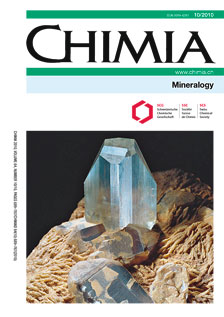Cation Ordering and Superstructures in Natural Layered Double Hydroxides
DOI:
https://doi.org/10.2533/chimia.2010.730Keywords:
Cation ordering, Layered double hydroxides, Minerals, SuperstructureAbstract
Layered double hydroxides (LDHs) constitute an important group of materials with many applications ranging from catalysis and absorption to carriers for drug delivery, DNA intercalation and carbon dioxide sequestration. The structures of LDHs are based upon double brucite-like hydroxide layers [M2+nM3+m(OH)2(m+n)]m+, where M2+ = Mg2+, Fe2+, Mn2+, Zn2+, etc.; M3+ = Al3+, Fe3+, Cr3+, Mn3+, etc. Structural features of LDHs such as cation ordering, charge distribution and polytypism have an immediate influence upon their properties. However, all the structural studies on synthetic LDHs deal with powder samples that prevent elucidation of such fine details of structure architecture as formation of superstructures due to cation ordering. In contrast to synthetic materials, natural LDHs are known to form single crystals accessible to single-crystal X-ray diffraction analysis, which provides a unique possibility to investigate 3D cation ordering in LDHs that results in formation of complex superstructures, where 2D cation order is combined with a specific order of layer stacking (polytypism). Therefore LDH minerals provide an indispensable source of structural information for modeling of structures and processes happening in LDHs at the molecular and nanoscale levels.Downloads
Published
2010-10-29
Issue
Section
Scientific Articles
License
Copyright (c) 2010 Swiss Chemical Society

This work is licensed under a Creative Commons Attribution-NonCommercial 4.0 International License.
How to Cite
[1]
Chimia 2010, 64, 730, DOI: 10.2533/chimia.2010.730.







